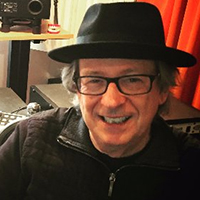Rhythm section tracking is the most important recording session in the production cycle of a record. The recording engineer captures the feel and sound of the musicians as they interpret the song and support the artist’s performance.
The rhythm track’s sound is a component of the production style and identifies the record’s musical genre. I liken the track to the foundation of a house: you can’t build very high on a weak base!
Subsequent overdubbed sweetening is just “window dressing” to reinforce and/or beautify what was laid down originally by the rhythm track musicians.
Recording one musician at a time is a valid process when the vision of the song is still hazy (maybe you are still writing it) or you don’t have the facility for recording everyone at once. The “one-brush-stroke-at-a-time” method is especially good in the case of small home/project studio productions.
The all-at-once-approach is old-school—and valuable when there are budget and time constraints. Just like in the old days, when primitive recording studios only “documented” a live performance directly to an acetate disc and then later to a tape recorder, many Jazz and alternative Rock producers (like Frank Black) today are recording bands directly to two-track stereo machines.
I have always thought that the more music you could record at one time, the better. For me, from a music mixer’s “big picture” standpoint, hearing everyone playing together results in a better recording, a better mix and a better vibe – even though you can always fix and change it later in a computer.
Convincing fickle artists and trend du jour-following A&R people of this fact is sometimes difficult. Seems like some people get more heat out of the Pro Tools rig than from the tracking room.
Recording Drums
Whether you record all at once or one musician at a time, you’ll probably want live drums, and I want to focus on tracking drums because I find it’s what people struggle with. Starting the track recording sessions with drums is another holdover from early recording days when most drummers got to the session early to set up and work on sounds with the engineer.
Whether you’re tracking everyone together or overdubbing the drums on an existing track, the drum kit needs the most floor space. The rest of the musicians should setup around the drummer for good eye contact and easy communication.
Unless I’m familiar with the room beforehand, I start out putting the drums in the middle of the room away from walls. If you place the kit with the drummer’s back to a wall, you’ll get a tight reflection and a sonic coloration from the wall’s construction material…be it plaster, wood, cinder block or a glass window—usually to be avoided, but could be good.
Putting the kit in a corner will increase low frequencies and add the reflections of two walls, which also could be good! The drummer will probably like to set up on a carpet throw rug if the studio is not carpeted. Some of the best sounds come from studios with wood or tile floors where area rugs will “stop” the room down for a reverb time (rt) of around one to two seconds…or much less for a very dry, funk drum sound. I have used a wooden riser that adds a woody, overall stage quality especially to the bass drum.
Some metal bands use a huge PA power amplifier with separate mics on the kick and snare that drive subwoofers built-in to the riser…essentially reinforcing the low frequencies for the benefit of the room mics. This subwoofer rig, done right, sounds huge! Similar studio PA schemes will add a very live quality to the drum recording.
Miking the kit can take lots of microphones… or not! If you have a large console and lots of microphones and a patient drummer (that will work with you tweaking in the control room), go for using a lot of mics on everything that moves on the kit.
I think a lot of engineers think by separately miking a kit they should get isolation between the different drums and cymbals. All manner of gating, wacked equalization, and strange mic positioning goes on to try to obtain this drum machine quality.
In my opinion, you should have your drummer play pads and trigger samples if that is what you looking for…because it is unrealistic to think that a well-miked, real drum set will ever sound that way. Think of the close microphones as “spotlights” that enhance the sound of the overheads. The close mics add low frequencies, attack and panoramic image focus to the overheads’ sound.
Tracking with limited console real estate (ten inputs or less) requires you to use less mics and spend more time on their exact choice, placement, processing and submix. Naturally, drum tuning and balance (the drum mix the drummer produces when playing), room ambience, cymbal choice and playing volume are even more important and less controllable after-the-fact than a multi-miked setup that you get to “remix” later.
I get a great drum sound, as good as anything on the radio with about five microphones: kick, snare, hat and two overheads. One way to conserve microphones and inputs is to know what the drummer is going to play beforehand.
It’s kind of silly to mike up tom-toms, put them on separate tracks, and never have the drummer use them! Actually, some of the coolest “dialed-in” drum sounds I ever got was when the drummer and I worked on the actual drum part in the song and tailored each microphone’s position and processing together to exactly “fit” the groove.
If you have any outboard mic preamps or good condenser mics, I would use them on the overheads first. The sound in the overheads is the sound of the kit. Another fallacy is that the overheads are for cymbals only as if you can get rid of the rest of the kit through some kind of engineering science that defies the laws of physics! Get those “overs” sounding good and in balanced with your drummer and the rest is easy!




















